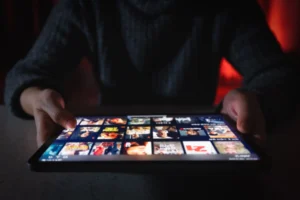Augmented Reality and Virtual Reality technologies have come a long way since they were invented in 1992 and 1968, respectively. Though they were invented all those years ago, it is only in the last couple of years that the world and industries are waking up to their benefits. Though the technology was known, what was lacking were the accessories and fine-tuning it needed to be of great use. AR and VR provide interactive experiences that go beyond what traditional media can offer. Brands can leverage these technologies to increase engagement with their audience. The communication delivered through AR and VR is often found to be powerful, creating a strong and lasting impact. Often equated with sci-fi fiction, these two technologies have heralded a new method to market products and services.
Interaction: Brands can use these technologies to create a virtual experience for customers that provides them with an ingenious way to interact with the brand and engage with and experience the brand. A travel tour operator can virtually take the customer through the places on the itinerary, thereby giving them a first-hand feel of the locations. A furniture brand can make use of this technology to create a virtual room where users can place the furniture and see how it fits in their space. This interactive experience creates a memorable impression on the customer and increases their engagement with the brand. Interaction creates loyalty.
Information: AR and VR act as powerful tools to provide brand information to customers, which is a handicap in traditional and online media. The complete details of the product, along with a 360-degree view, can be provided to the customers, which makes it easy for them to decide. A car manufacturer can show every section of the vehicle to the customer and, from a larger perspective, can take them on a virtual tour of the factory to illustrate the manufacturing process and quality management. This information surplus creates a deep connection between the brand and the customer. A packaged food brand can show the complete range of products along with the manufacturing process to highlight hygiene. Information gives authenticity to the brand.

Innovation: If there is something that attracts eyeballs, then it is innovation. AR and VR are such stupendous tools that they take innovation to another level altogether. The sky’s the limit here for brands to be innovative and appealing. Clever marketers would make the customers feel the brand using these technologies. A footwear brand can create a human prototype of the customer and make them see how it fits or suits them. An apparel brand can create a virtual fashion show and showcase its latest collections. This helps create a buzz in the market about the brand and enhances its appeal. This innovation makes purchasing simple and fast.
Improvisation: Improvisation is the art of making the customer feel that a product or a service is specially and exclusively made to order for him. Brands that have the tradition of going the extra mile to give personalized preference and service to customers would find AR and VR to be of great help. These technologies can be used by brands to create experiences that are tailored to individual customers’ preferences. A music streaming service can create a virtual concert where the user can select his favorite singer and song. A food delivery brand can customize its offerings to a great level. An apparel brand can guide the customer toward his personal choice.
AR and VR technologies can be leveraged to a great extent to enhance customer engagement with the brand. Brands that successfully utilize these technologies would benefit to a great extent and would stay ahead in the race. In this fast-moving world with rapid technological changes, brands need to evolve with time and make use of technology to increase their perception, appeal, value, and goodwill.




